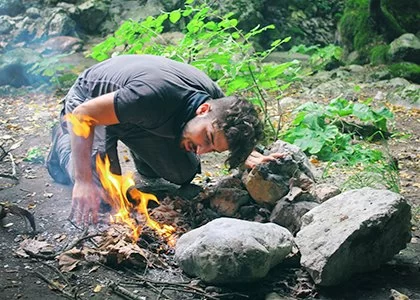- building-a-survival-mindset-in-the-wilderness
- prioritizing-survival-needs-when-resources-are-scarce
- real-world-examples-of-survival-against-the-odds
- tools-or-no-tools-understanding-resourcefulness
- enhance-your-outdoor-confidence-with-pine-cliff-resort
1. Building a Survival Mindset in the Wilderness
When you think of outdoor survival with limited resources, most people imagine it’s all about gear. In reality, the most powerful tool is your mind. Staying calm, assessing risks, and maintaining a positive attitude can mean the difference between life and death in the wilderness. The moment panic sets in, energy drains faster and decision-making becomes clouded.
In survival training circles, there’s a saying: “90% of survival is mental.” This principle is especially true when resources are scarce. Staying mentally focused on small, achievable goals—like finding dry wood or purifying water—keeps morale high and increases your chances of success.
2. Prioritizing Survival Needs When Resources Are Scarce
To survive outdoors with limited resources, understanding the survival rule of threes helps frame your priorities:
• 3 minutes without air
• 3 hours without shelter in extreme weather
• 3 days without water
• 3 weeks without food
In most environments, shelter and water become top priorities. You don’t need a tent—natural shelters using branches, leaves, or even snow caves can be effective. As for water, finding a source is only the first step. Even a muddy puddle can be lifesaving if you know how to filter and boil it.
Fire is another critical resource, both for warmth and morale. With limited tools, mastering primitive fire-starting techniques, like bow drills or using flint and steel, can be a game-changer. Foraging and fishing without modern gear also come into play when you stay in the wild for days or weeks.
3. Real-World Examples of Survival Against the Odds
Survival stories have captivated people for generations. One compelling case is that of Ricky Megee, who survived 71 days in the Australian outback by eating leeches, frogs, and ants. He built makeshift shelters and rationed muddy water using solar stills made from plastic.
Such tales demonstrate that it’s not just the physically prepared who survive—but the mentally adaptable. Many survivors report using visualization, mantras, or memories of loved ones to push through intense hunger, cold, or fear. The human spirit, when driven by will to live, becomes remarkably creative.
4. Tools or No Tools? Understanding Resourcefulness
In bushcraft, tools like knives, axes, or fire starters are invaluable. But what happens if you’re caught without them? This is where understanding the environment becomes vital. Sharp rocks can substitute blades, and cordage can be made from plant fibers like inner bark or nettle stems.
Some of the best survivalists train by deliberately leaving gear behind. Their goal isn’t to suffer—it’s to become more observant. They learn to read the land, identify edible plants, track animals, and use the terrain to their advantage. When every item is scarce, the ability to innovate becomes your greatest asset.
5. Enhance Your Outdoor Confidence with Pine Cliff Resort
If you’re intrigued by the principles of outdoor survival with limited resources but don’t want to jump straight into the deep end, a controlled wilderness setting is the perfect way to start. At Pine Cliff Resort, guests can experience structured survival workshops, wilderness treks, and bushcraft sessions—all while enjoying a comfortable base camp.
Whether you're preparing for off-grid hiking adventures or simply want to understand what it takes to thrive under pressure, this is where skills meet safety. From fire-making and water purification to shelter-building and emergency mindset training, Pine Cliff Resort offers practical experiences that make survival knowledge not only accessible but empowering.







